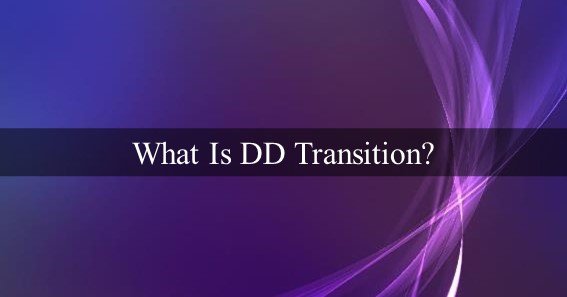Are you curious to know what is DD transition? You have come to the right place as I am going to tell you everything about DD transition in a very simple explanation. Without further discussion let’s begin to know what is DD transition?
DD transition, also known as a d-d transition or a d-d electron transfer, is a type of electronic transition that occurs between two d-orbitals in a metal ion. This phenomenon plays a key role in the color and optical properties of many transition metal compounds, including coordination complexes and transition metal oxides. In this blog post, we’ll explore what DD transition is, how it works, and why it’s important in chemistry.
What Is DD Transition?
DD transition refers to a type of electronic transition that occurs between two d-orbitals in a metal ion. In coordination complexes, the d-orbitals of the central metal ion are often partially filled with electrons. When the light of a particular frequency (or color) is absorbed by the complex, an electron in one d-orbital is excited to a higher-energy d-orbital. This process is known as a d-d electron transfer or a DD transition.
The energy difference between the two d-orbitals determines the frequency of light that will be absorbed, and therefore the color of the complex. This is why many transition metal complexes exhibit intense and characteristic colors, ranging from pale yellows and oranges to deep purples and blues.
How DD Transition Works?
DD transitions occur when an electron in a lower-energy d-orbital is excited to a higher-energy d-orbital by absorbing a photon of light. The energy of the absorbed photon must be equal to the energy difference between the two d-orbitals, which determines the color of the complex.
Once the electron is excited to a higher-energy d-orbital, it is unstable and tends to return to its original energy state by emitting a photon of light. This process is known as fluorescence or phosphorescence, depending on whether the emission occurs immediately or after a delay.
Click here – Understanding the GRE Math Section: What You Need to Know
Why DD Transition Is Important?
DD transition plays a crucial role in the color and optical properties of many transition metal compounds. By understanding the energy differences between the d-orbitals in a metal ion, chemists can predict the colors and optical properties of coordination complexes and transition metal oxides.
DD transitions are also important in other areas of chemistry, including catalysis, electrochemistry, and bioinorganic chemistry. By studying the electronic properties and reactivity of transition metal complexes, chemists can develop new materials and processes with important applications in fields such as energy, medicine, and environmental science.
Conclusion
DD transition is a key phenomenon in the world of transition metal chemistry, playing a crucial role in the color and optical properties of many compounds. By understanding how DD transitions work and the factors that influence them, chemists can develop new materials and processes with important applications in a variety of fields. Whether you’re studying catalysis, materials science, or bioinorganic chemistry, an understanding of DD transition is essential for success in this fascinating and important area of chemistry.
On GetDailyBuzz you will get to know beneficial information which required in your daily life.
Click here – Hiking, Biking, and Rock Climbing in the Land of Mount Ararat
FAQ
What Causes DD Transition?
The reason behind this is the crystal field splitting of d-orbitals of the central metal atom. The electrons present in the ground state absorb light in the visible range and jump into a higher energy level and complementary colors appear. This phenomenon is known as d-to-d electronic transition.
What Is DD Transition Metal?
d-d transitions: d-d transitions are electronic transitions that occur between the molecular orbitals (MOs) that are mostly metal in character; specifically the orbitals that we think of as the d-orbitals of a transition metal complex.
What Is An Example Of A DD Transition?
In aqueous solution, [Ti(H2O)6]3+. Appear as purple due to the absorption of light from the visible range ( green and yellow portion) resulting d-d transition ( electron jump from t2g level to eg level) as a result complex has complementary ie purple
What Is The DD Transition In Chemistry Class 12?
The transition metal forms coordination complexes which are usually colored. The color of the complex is due to the presence of unpaired electrons as the electrons absorb the energy and move to the excited state from the ground state. This is known as the d-d transition.
Is DD Transition Possible?
In other words, a d-d transition is only possible in d1−d9 metal ions. In a UV-visible absorption spectrum, d-d transitions appear as relatively weak absorption with extinction coefficients (ε) less than 1,000.
Why Is DD Transition Weak?
In addition, the d-d transitions are lower in energy than the CT band because of the smaller energy gap between the t2g and eg in octahedral complexes (or eg to t2g in tetrahedral complexes) than the energy gap between the ground and excited states of the charge transfer band.
I Have Covered All The Following Queries And Topics In The Above Article
What Is Mean By DD Transition
What Is D D Transition Example
D-D Transition Colour
D-D Transition In Metal Complexes
D-D Transition Pdf
Colour Due To D-D Transition Examples
D-D Transitions In Octahedral Complexes
DD Transition Rule
What Is DD Transition
What is a process of DD transition responsible for
What is a d-d transition?

